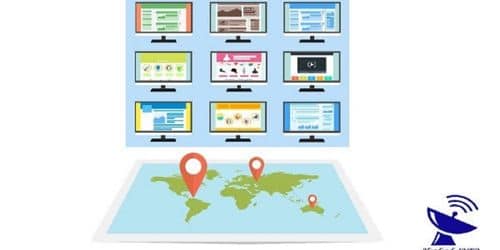Narrowcasting
To narrowcast means to deliver your vital communication in an inflexible manner, like focusing your message on a particular kind of person. It is a significant strategy in broadcasting and advertising. It is also the delivery of information or material to a limited or restricted audience. We will explain the process of narrowcasting with an example.
Narrowcasting is the process of targeting media messages to specific groups of people depending on their values, interests, or demographics. Based on the notion that vast audiences don’t exist, this focuses on a particular narrow subject.
What is the Process of Narrowcasting?
You can use a media player as an example of your narrowcasting network. This media player uses narrowcasting software to connect to a server and retrieve content at predefined intervals. The following are processes of narrowcasting
#1. Transmission From a Radio Channel
Although this is a conventional approach, it can serve as a good illustration of how to narrowcast. Every city has its own radio channels that only connect to the residents of that place and broadcast local songs, news, and music. As a result, the only audience that qualifies for this channel’s information is the individuals in that public space, which is why it is a narrowcast.
#2. Solutions for Geo-targeted Advertising
There are some businesses that offer head-end geo-targeted advertising solutions. Local or regional advertisements are also available to channels to substitute for the satellite feed’s advertisements. IRD and WEB USER INTERFACE are useful to accomplish this. This example of narrowcasting can also enable their products to reach their intended customers. It boosts advertisers’ revenue.
#3. TV Networks
There are numerous television stations that cater to specific demographics. These channels offer content from a single category designed for a specific audience. An example of this narrowcasting includes television programs for children, music, and sports.
#4. Digital Signage
The best example of narrowcasting is digital signage, because corporate offices, mail rooms, and cafeterias all have digital signage installed.
These digital signs are in place to digitally tell a crowd of people about a business or an emergency. As a result, it is a narrowcasting example because only a small group of people receive the information.
Narrowcasting Advantages
The following are some narrowcast benefits.
#1. Communicate With Target Markets
Connecting with target audiences who are categorized by location, period of time, and activities is thus possible through narrowcasting. Through interactive digital displays, the process uses specific content to speak to a specific segment. This facilitates clearing out the crowd around it, thus creating interest and relevance in actual prospective customers.
#2. Variety of Subject Matter
There could be a splitting of the consumer market into a number of niche groups. However, to narrowcast, it aids in connecting with your clients through various forms of content that can satisfy a variety of needs. The content can also be in form of a presentation using a variety of formats, including moving or static images, flash, and video. It can also be consumer-service-makeup, promotional, or even entertaining.
#3. Being Economical
Narrowcasting is cost-effective because it is less expensive than broadcasting and other forms of creating and modifying content.
#4. Create a Personalized Message
Narrowcasting can also be used to broadcast a specific message to a specific audience in a specific location. The good thing about this is that your message can be as clear as you want your audience to receive it.
Through the use of personalized content and messages, you may create a lasting impression on your audience. It even enables groups to get information that is specifically relevant to them.
Finding the data and information that will be valuable to them, therefore, does not require slogging through useless information or wasting time and effort.
Narrowcasting Disadvantages
The following are some of the narrowcast drawbacks:
#1. It Causes Conflict to Develop
Narrowcasting advocates focusing on a certain group and fostering the division that results from this differentiation. It often encourages friction between the various groups and might result in unhappiness. Ideologies that can harm society, both politically and socially, are prominently in emphasis.
#2. Small-Minded Societies
Group creation is possible by narrowcasting. These groupings are not open to various points of view from individuals. They are always in a drive to adopt their viewpoint, which leads them to think that they are always correct. Narrowcasting creates a world where there is significant disagreement in perspective and method.
Interactivity in Narrowcasting
It is a form of narrowcasting in which consumers engage with or try out things before making a purchase. This specific type of narrowcasting is particularly successful because it allows users to experience the products, which enhances the likelihood that they will purchase them. Only the user can use the information that was obtained from the interaction. Therefore, even though it’s dubbing its narrowcasting,”
Narrowcasting is delivering information to a specific target audience or small group of people. Previously, businesses would just broadcast commercials for the whole public, but narrowcasting is a very new phenomenon.
With the help of the narrowcasting concept, marketers and advertisers may pinpoint target audiences and produce communications that are only for them. The focus of narrowcasting is on specific public segments that are defined by demographics, tastes, and values rather than broad audiences. Tools useful in narrowcasting include:
- Web seminars promoting specific keywords
- Trade periodicals
- Postal service
- The use of cables
- Digital screens
Narrowcasting is the practice of distributing visual content to a chosen target audience at the appropriate time and location.
Applications for Narrowcasting
Many industries, including public-venue marketplaces, education, corporate, and retail, now depend heavily on narrowcasting systems. The following are a few applications for narrowcasting:
#1. Point of Waiting
In corporate offices, museums, banks, hospitals, and hotels, point-of-wait narrowcasting can be used to show staff and guests critical and pertinent data like specialized content, weather updates, or the location, time, and date of an impending event.
It is designed to improve the message that is displayed, exposing the target audience who are waiting there to a better setting. As a result, the business makes the most of the waiting time at the waiting location by displaying customized messages.
#2. Online Outdoor Advertising
Through digital out-of-home advertising, it is now simple to connect with the target audience and deliver attention-grabbing content. Because of its interactive character, viewers from outside can readily engage with and relate to the exhibited content.
The term “digital out-of-home application” describes digital displays that can show the intended advertising and information in a public setting, such as an LED billboard or simply a shelf display.
#3. Point-of-Sale Systems
The installations for narrowcasting are specifically to give businesses a quantifiable return. They are useful in a point-of-sale network close to a particular service or product so that customers can quickly find and recognize them.
Local businesses employ the idea of narrowcasting to inform customers about the availability of particular product categories. Additionally, it is useful for enhancing consumer experiences in retail outlets and cross-promote goods and services.
Narrowcasting Example
A narrowcasting screen may show almost anything that can be presented on a computer screen. Examples of this kind of content are photographs and videos; animations; text and/or image-based templates; RSS-based content; and entire websites. An example of narrowcasting can be found in buildings as well as in stores, supermarkets, canteens, waiting rooms, dining establishments, and public transportation.
Utilize Narrowcasting to Reach Your Target Demographic.
A contemporary method of connecting with your staff and (possible) consumers is through narrowcasting, a type of digital signage. You can educate and engage your target audience by displaying alternating or animated content on your screens. This enables you to communicate your message via your own television channel in a clear and efficient manner, whether you want to welcome visitors, highlight special promotions, or keep your staff informed.
Important Elements for Successful Narrowcasting
With the use of customized and specialized information, narrowcasting is a useful strategy for reaching target groups. A clear and specific plan must be in place for it to be successful and effective. The success of this idea depends heavily on the variables listed below:
#1. Identify Your Target Audience.
It is impossible to begin a process like narrowcasting that necessitates diligence before and until you are clear in your thoughts. If you’re trying to figure out how to make a successful narrowcasting plan, find out who your target audience is and what their particular interests are.
Once you receive your responses, you should adjust the content to that group’s needs in order to make it relevant to them.
#2. Understand the Location
Both placement and content are crucial, and they should work together to better convey the words’ intended meaning. Since the approach of this targets specific audiences at certain locations, it is crucial to understand certain details like how long visitors are expected to wait at a given point of delay so that the material can be customized for that time period.
It is a reality that either too little or too much content will lose its effect and its underlying meaning if it is in plain sight for everyone to see. If you’re also looking for ways to narrowcast to create an effect, carefully evaluate the digital signage program and placement.
#3. Balance the Content of Narrowcasting
Balancing the promotional content is the key if you’re looking for strategies to use digital signs for effective narrowcasting. Anything that is too much or too little does harm to the entire customer experience and engagement.
#4. Measurement with Audience Analytics
With the use of analytics, it is simple to gauge the success of narrowcasting. Different technologies available today can track, examine, and quantify how customers react to the displayed content.
Facial expressions, headcount, length of stay, gender, and age are among the data collected. By examining the audience’s behavioral indicators, an entity can more easily gauge its success.
Narrowcasting FAQs
What is broadcasting vs narrowcasting?
Broadcasts are designed to appeal to the broadest possible audience, whereas narrowcasts target a specific group of people who are most likely to be interested in the content they are broadcasting.
What are examples of narrowcasting?
Examples of narrowcasting can be found on buildings as well as in stores, supermarkets, canteens, waiting rooms, dining establishments, and public transportation.
What is a narrowcasting in advertising?
Targeting media messaging at particular public segments based on values, tastes, or demographics is known as narrowcasting. Based on the notion that vast audiences don’t exist, narrowcasting focuses on a particular (narrow) subject.
Why do marketers prefer narrowcasting?
It’s possible to tailor your message to a certain set of individuals by narrowcasting. You don’t need to be as cryptic in your advertising because you are reaching out to people who may already be familiar with your brand or interested in your services.
Related Articles
- Content Marketing Manager: Job Description, Interview Questions & Salary (Updated!)
- BUSINESS-TO-CONSUMER (B2C): Sales Models and Marketing Strategies
- Behavioral Segmentation: Strategies, Examples & Helpful Tips
- Inbound Marketing vs Outbound: How to Scale any Business Combining both Strategies
- 6 Tips For Competitive Commercial Property Refinancing






